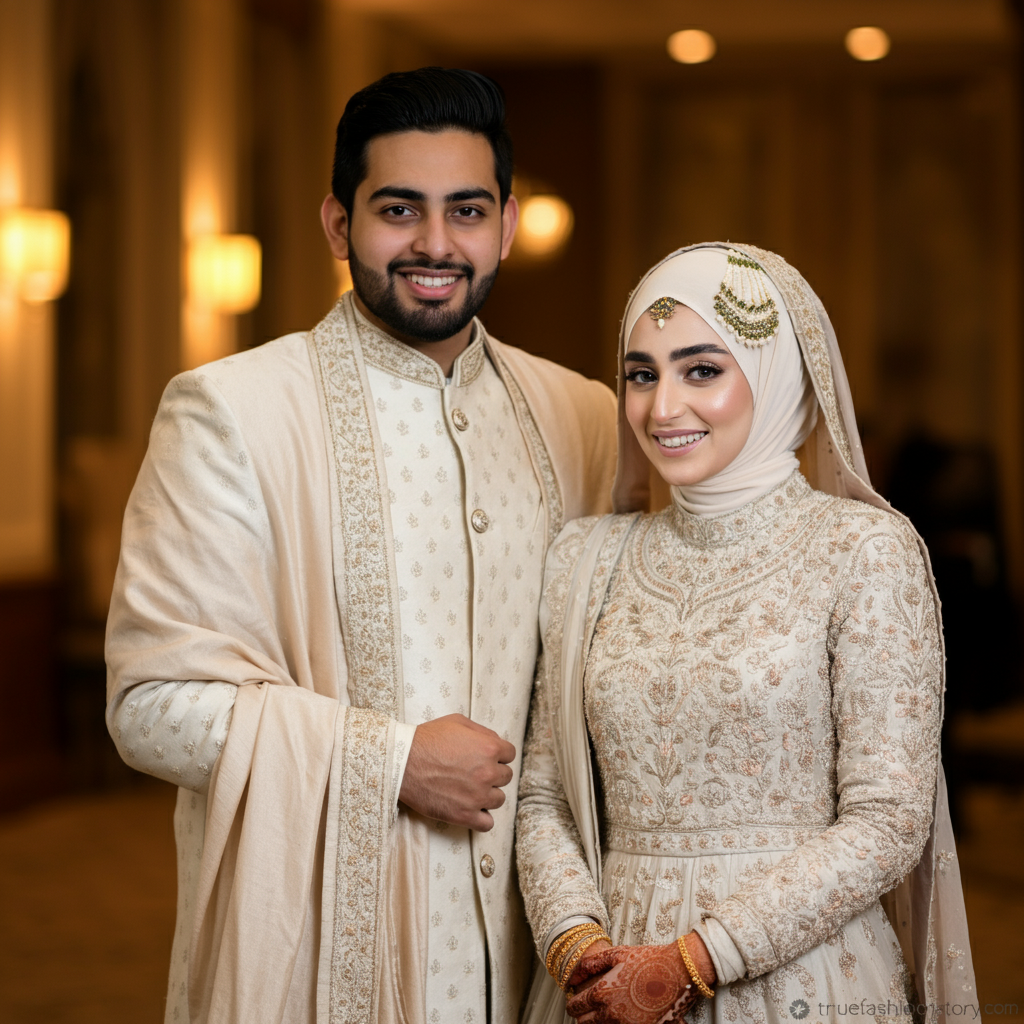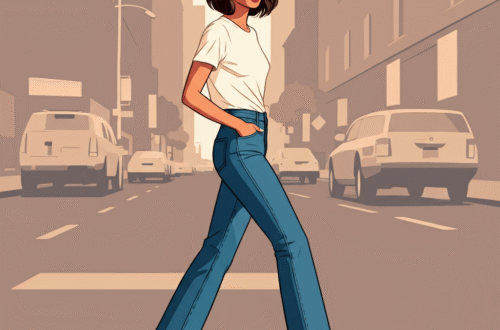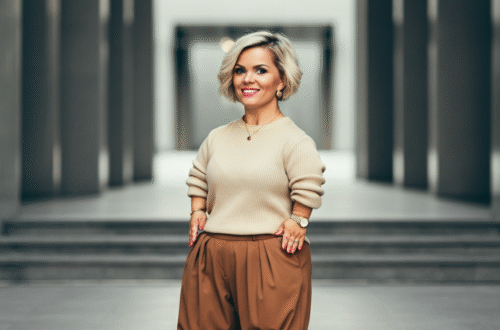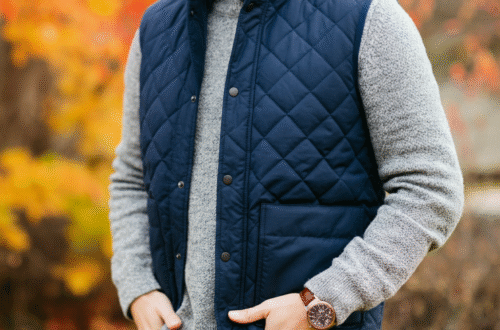Finding the perfect outfit for a wedding is a joyful experience, and for many, it’s also a deeply personal expression of faith and culture. The world of muslim marriage clothes is wonderfully diverse, filled with rich fabrics, intricate designs, and timeless traditions from every corner of the globe. Whether you’re a bride, groom, or guest, navigating the options can feel both exciting and overwhelming. This guide is here to walk you through the beautiful variety of Islamic wedding attire, from the principles of modesty that guide them to the modern trends shaping them today. We’ll explore stunning regional styles, explain common fabrics, and offer practical tips for shopping in the United States, helping you find an outfit that feels truly special.
What “Muslim Marriage Clothes” Means Today
The term muslim marriage clothes doesn’t refer to a single, uniform style. Instead, it describes a vast and vibrant category of attire that honors Islamic principles of modesty while celebrating cultural heritage. For many, these garments are a blend of tradition and personal taste. In today’s globalized world, a bride in Texas might wear a Pakistani-style lehenga with a modern silhouette, while a groom in California could choose a classic Arabic thobe or a stylish Turkish-inspired suit. The core idea is to wear something beautiful and respectful for the Nikah (marriage ceremony) and the Walima (reception) that follow. These outfits are more than just clothing; they are symbols of identity, family pride, and the spiritual significance of the union. Modern designers are constantly innovating, offering size-inclusive options, sustainable fabrics, and fresh takes on classic designs that allow couples to express their unique love story.
Key Principles of Modesty and Culture
At the heart of Islamic wedding attire are the principles of modesty, or haya. While interpretations vary, the general guidelines for both men and women involve wearing clothing that is not revealing or overly tight-fitting. For women, this often means choosing gowns with long sleeves, high necklines, and opaque fabrics. The hair is commonly covered with a hijab or an ornate veil. For men, modesty typically involves covering the body from the navel to the knees. However, these principles are beautifully interwoven with cultural traditions. For example, a Moroccan bride’s takchita is inherently modest but also features vibrant colors and intricate beadwork that reflect her heritage. Similarly, a Malay groom’s baju melayu is both modest and a proud symbol of his cultural identity. These garments prove that modesty and high fashion are not mutually exclusive; they can coexist to create looks that are both spiritually meaningful and breathtakingly beautiful.
Popular Bride Looks Across Regions
A bride’s wedding day look is a stunning reflection of her heritage and personal style. The diversity across Muslim cultures offers a rich palette of silhouettes, fabrics, and embellishments to choose from. Let’s explore some of the most popular styles.
South Asian Elegance
In South Asia (Pakistan, India, Bangladesh), bridal wear is known for its opulence and grandeur. The lehenga choli is a dominant choice, featuring a long, flowing skirt paired with a fitted blouse and a dupatta (a long, decorative scarf). These garments are often made from luxurious fabrics like handloom silk, brocade, or velvet and are heavily embellished with zari (gold thread), beadwork, and intricate embroidery. Another popular option is the sharara or gharara, which consists of wide-legged, flared pants paired with a mid-length tunic (kameez) and a dupatta. Red is a traditional bridal color symbolizing love and prosperity, but modern brides are also embracing a wide range of hues, from soft pastels to rich jewel tones.
Middle Eastern and North African Royalty
Bridal fashion in the Middle East and North Africa often feels regal and timeless. In the Arabian Gulf, brides might opt for a lavish white wedding gown inspired by Western fashion but with modest modifications like long sleeves and a higher neckline, often paired with a stunning hijab style. The traditional Ottoman kaftan from Turkey, a long, flowing robe made of silk or velvet with ornate embroidery, remains an inspiration for elegant bridal looks. In Morocco, the takchita is a two-piece masterpiece, consisting of a simple inner dress and a lavishly decorated over-dress, cinched at the waist with a decorative belt. These garments use luxurious fabrics like satin and chiffon, adorned with handmade embroidery and beadwork.
Southeast Asian Grace
Southeast Asian muslim marriage clothes are celebrated for their grace and understated elegance. In Malaysia and Brunei, the baju kurung and baju kebaya are popular choices. The baju kurung is a two-piece outfit with a knee-length tunic worn over a long skirt, often made from handloom silk or songket, a luxurious brocade fabric. The Indonesian kebaya is a beautiful, form-fitting blouse, often made of lace or sheer material, worn over a long skirt called a kain. For a modest look, it’s paired with an inner garment (manset). These outfits are known for their intricate lace details, delicate beadwork, and soft, feminine color palettes, perfectly blending tradition with refined style.
Groom Attire Options You’ll See and Love
Grooms have just as many wonderful options when it comes to their wedding attire. Traditional garments are often chosen for the Nikah ceremony, reflecting cultural and religious significance, while a sharp suit is common for the Walima or reception. A popular choice across many cultures is the sherwani, a long, coat-like jacket often worn over a kurta and paired with churidar (fitted trousers). Sherwanis can range from simple and elegant to heavily embroidered for a more regal look. For a distinctly Middle Eastern style, the thobe or dishdasha is a classic choice. This long, flowing ankle-length robe is often worn with a bisht, a formal cloak trimmed with gold embroidery, for special occasions. In Southeast Asia, the baju melayu is a handsome two-piece outfit consisting of a tunic and matching trousers, often worn with a decorative cloth called a samping tied around the waist.
Fabrics and Embellishments Explained
The beauty of muslim marriage clothes lies in the details. The choice of fabric sets the foundation for the entire look, influencing its drape, feel, and overall elegance. Luxurious materials like handloom silk, brocade, and velvet are favored for their richness and are often used in South Asian and Turkish designs. Lighter fabrics such as chiffon, georgette, and organza offer a soft, ethereal quality, perfect for flowing gowns and dupattas. Satin provides a beautiful sheen, while lace adds a touch of timeless romance, particularly in Indonesian and Western-inspired bridal wear.
The embellishments are what bring these fabrics to life. Embroidery is a hallmark of Islamic wedding attire, with techniques varying by region. This can include intricate threadwork, sparkling zari and zardozi (gold and silver thread), and delicate beadwork. Sequins, crystals, and pearls add a touch of glamour, catching the light with every movement. These handcrafted details are not just decorative; they are a form of artistry passed down through generations.
Colors, Symbolism, and When to Wear Them
Color plays a powerful symbolic role in Muslim weddings. While the pure white gown is a global symbol of weddings, many Muslim cultures embrace a richer and more varied color palette. In South Asian traditions, red is the quintessential bridal color, representing love, passion, and prosperity. It is most often worn for the main wedding ceremony. For other events, like the Mehndi (henna party), brides often wear vibrant shades of yellow or green, symbolizing joy and new beginnings.
In many Middle Eastern and Southeast Asian cultures, lighter colors are preferred. White, ivory, and soft pastels like blush pink and mint green are popular choices for the Nikah ceremony, signifying purity and peace. The groom’s attire often complements the bride’s. He might wear a classic white or off-white thobe or sherwani, or choose an outfit in a coordinating color. Ultimately, modern couples are free to choose colors that reflect their personal style, blending tradition with contemporary tastes.
Seasonal and Venue Styling Tips for the US
Choosing your muslim marriage clothes in the United States requires some practical considerations related to seasons and venues. For a summer wedding, prioritize breathable fabrics like cotton-silk blends, chiffon, or lightweight lace to stay comfortable, especially if part of the celebration is outdoors. Lighter colors can also help you stay cool. For a winter wedding, you can embrace richer materials like velvet, raw silk, or heavy brocade. Layering is also a great option; a groom can wear a stylish waistcoat over his kurta, and a bride can opt for a beautifully embroidered velvet shawl.
Consider your venue as well. A grand ballroom might call for a more opulent look, like a heavily embellished lehenga or a regal sherwani. For a simpler ceremony in a mosque or a garden, a more understated yet elegant outfit, like a chic kebaya or a classic kurta set, might be more appropriate. You can find more styling ideas and fashion tips at the truefashionstory.com Blog to help you put together the perfect look.
How to Shop Smart in the US (Sizing, Tailoring, Budget)
Shopping for muslim marriage clothes in the US has become easier than ever, thanks to a growing number of specialty boutiques and online stores. When shopping, especially online, pay close attention to size charts, as international sizing can differ significantly from US sizes. It’s always a good idea to take your measurements beforehand.
Finding a good tailor is crucial. Even if you buy an outfit off the rack, professional alterations can make it look like it was custom-made for you. Look for tailors experienced with delicate fabrics and embellishments. When it comes to budget, there’s a wide range of options available. You can find beautiful, affordable outfits from online retailers or opt for a luxury, bespoke design from a high-end couturier. Don’t forget to factor in the cost of accessories, shoes, and tailoring when planning your budget. Starting your search early will give you plenty of time to explore, compare, and find the perfect attire without feeling rushed.
Comparison Table: Regional Styles and Fabrics
|
Feature |
South Asia (e.g., Pakistan) |
Middle East (e.g., Arabia) |
Southeast Asia (e.g., Malaysia) |
|---|---|---|---|
|
Bride’s Outfit |
Lehenga, Sharara |
Embellished Gown, Kaftan |
Baju Kurung, Kebaya |
|
Groom’s Outfit |
Sherwani, Kurta Pajama |
Thobe with Bisht |
Baju Melayu with Samping |
|
Common Fabrics |
Silk, Brocade, Velvet, Chiffon |
Satin, Lace, Chiffon |
Songket, Silk, Lace |
|
Key Embellishments |
Zari, Beadwork, Embroidery |
Crystal work, Pearls, Lace Appliqué |
Intricate Weaving, Lace, Beadwork |
|
Color Palette |
Rich reds, deep jewel tones |
Whites, ivories, gold accents |
Pastels, bright colors |
Styling the Hijab, Dupatta, or Veil
The head covering is an essential and beautiful part of the bride’s ensemble. Whether it’s a hijab, dupatta, or a formal veil, it can be styled to perfectly complement the wedding dress. For a cohesive look, the fabric of the head covering should match or coordinate with the outfit. A heavily embellished dress might be paired with a simpler hijab or a sheer dupatta with a delicate border to maintain balance. Conversely, a simpler dress can be elevated with a statement veil featuring intricate lacework or crystal scattering.
There are countless ways to style the hijab, from elegant drapes to sophisticated turban styles, often adorned with a tiara, jewels, or fresh flowers. The dupatta in South Asian weddings can be draped over the head and shoulders in various traditional ways, or even used as a dramatic, floor-sweeping trail. The key is to ensure the style is secure and comfortable, allowing the bride to move with ease and confidence throughout her special day.
Sustainable and Ethical Choices
As awareness around fashion’s environmental impact grows, many couples are seeking sustainable and ethical options for their muslim marriage clothes. This can mean choosing outfits made from eco-friendly fabrics like organic cotton, bamboo silk, or recycled materials. Another wonderful option is to support local artisans and brands that practice halal tailoring and fair-trade principles, ensuring that the people who create these beautiful garments are paid a fair wage.
Renting wedding attire is also becoming a popular and sustainable choice, allowing couples to wear a designer look for a fraction of the cost without the environmental footprint of a one-time-use garment. Finally, consider re-wearing or repurposing your wedding outfits. A beautiful bridal lehenga skirt can be paired with a simple top for another formal event, and a groom’s elegant sherwani can be worn for future celebrations. Choosing a sustainable path adds another layer of meaning to your wedding day.
Key Takeaways
- Muslim marriage clothes are a diverse blend of religious modesty, cultural heritage, and personal style.
- Popular bridal attire includes the South Asian lehenga, Middle Eastern kaftan, and Southeast Asian kebaya. Grooms often wear the sherwani, thobe, or baju melayu.
- Fabrics like silk, chiffon, and brocade are brought to life with embellishments like embroidery, beadwork, and lace.
- Color symbolism is important, with red signifying love in some cultures and white representing purity in others.
- When shopping in the US, consider seasonal fabrics, find a good tailor, and explore both budget-friendly and luxury options.
- Sustainable choices, such as renting or choosing ethical brands, are becoming increasingly popular.
FAQ: Muslim Marriage Clothes
1. What do guests wear to a Muslim wedding?
Guests should dress modestly and festively. For women, this could be a colorful long dress, a stylish abaya, or a kurta set. For men, a suit or a clean, smart-casual outfit is appropriate. It’s best to avoid black and pure white unless specified by the couple.
2. Are there specific outfits for different ceremonies, like the Nikah and Walima?
Yes, often the Nikah (ceremony) attire is more traditional and modest. The Walima (reception) is a celebration, and outfits can be more glamorous and formal, similar to a Western wedding reception. Some couples have multiple outfit changes.
3. Do I have to cover my hair if I’m a non-Muslim guest?
If the wedding ceremony is held in a mosque, all women (Muslim and non-Muslim) will be required to cover their hair with a scarf as a sign of respect. For receptions held at other venues, it is generally not required unless requested by the couple.
4. Can a Muslim bride wear a white wedding dress?
Absolutely. Many Muslim brides, particularly in the US and the Middle East, choose to wear beautiful white or ivory gowns. They often select styles that are inherently modest or have them customized with long sleeves and higher necklines.
5. Where can I buy muslim marriage clothes in the United States?
You can find them in specialty boutiques in cities with large Muslim populations (like Houston, Dearborn, or Paterson), at multi-brand online stores that ship to the US, or directly from designers based in the US and abroad.
6. What is the difference between a lehenga and a sharara?
A lehenga is a long, pleated skirt. A sharara is a pair of wide, flared trousers that look like a skirt. Both are traditionally worn with a blouse (choli or kurta) and a scarf (dupatta).
7. How far in advance should I order my wedding outfit?
It’s wise to start looking 9–12 months in advance, especially if you are considering a custom or bespoke design. For off-the-rack options, ordering 4–6 months ahead will leave enough time for shipping and alterations.
Conclusion
Your wedding day is a milestone, and the clothes you wear are a central part of that memory. The world of muslim marriage clothes offers a beautiful spectrum of choices that honor faith, celebrate culture, and express your unique personality as a couple. By understanding the principles, exploring the rich regional styles, and planning your shopping practically, you can navigate the process with joy and confidence. The perfect outfit is one that not only looks stunning but also feels deeply and authentically you, making your special day even more meaningful.





